Category: Diamond
Category Added in a WPeMatico Campaign
Natural Diamond Prices – December 2024
At PriceScope, we remain dedicated to providing timely and insightful updates on the latest trends in the diamond market. Our expert analysis focuses on the economic and social changes shaping […]
The post Natural Diamond Prices – December 2024 appeared first on PriceScope.
Holiday Jewelry Guide
The holiday season is upon us, and the shopping has already begun. If you want to buy jewelry for gifting your loved ones, we are here to help! We’ve put […]
The post Holiday Jewelry Guide appeared first on PriceScope.
Natural Diamond Prices – November 2024
At PriceScope, we remain committed to delivering timely and insightful updates on the diamond market’s latest trends. Our expert analysis focuses on the economic and social changes that shape consumer […]
The post Natural Diamond Prices – November 2024 appeared first on PriceScope.
Purchasing an Engagement Ring Remotely
Whether you are in the market or know someone who is (or will be), you should know how game-changing online shopping has become. In today’s digital age, purchasing an engagement […]
The post Purchasing an Engagement Ring Remotely appeared first on PriceScope.
Fall Birthstone Jewelry
For many of us, it’s Fall! Incorporating birthstone jewelry is one of the most sweetly lovely ways to personalize your fall wardrobe. Whether it’s your birthstone or the gem representing […]
The post Fall Birthstone Jewelry appeared first on PriceScope.
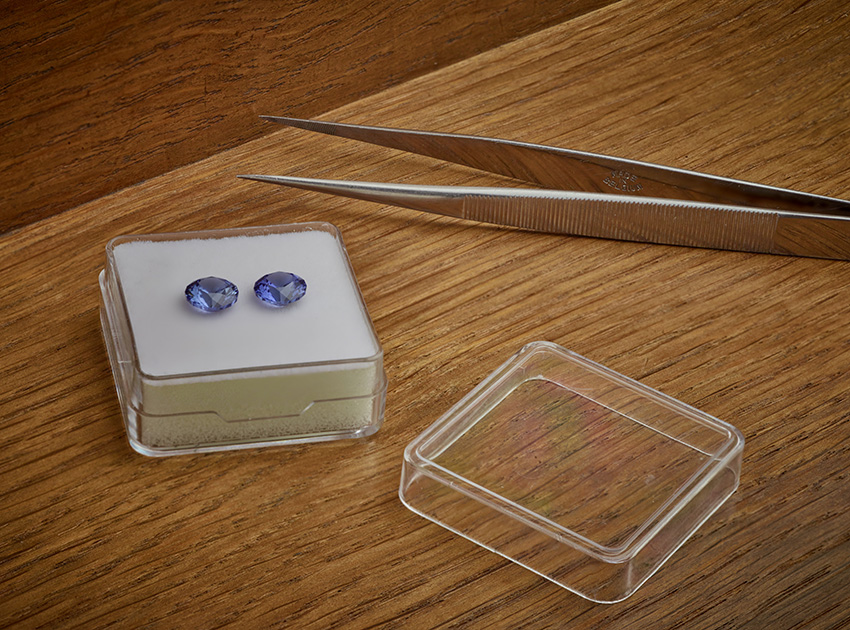

If you’re lucky enough to celebrate your birthday in December, you have the choice of three amazing birthstones, which include Tanzanite, Turquoise and Zircon.
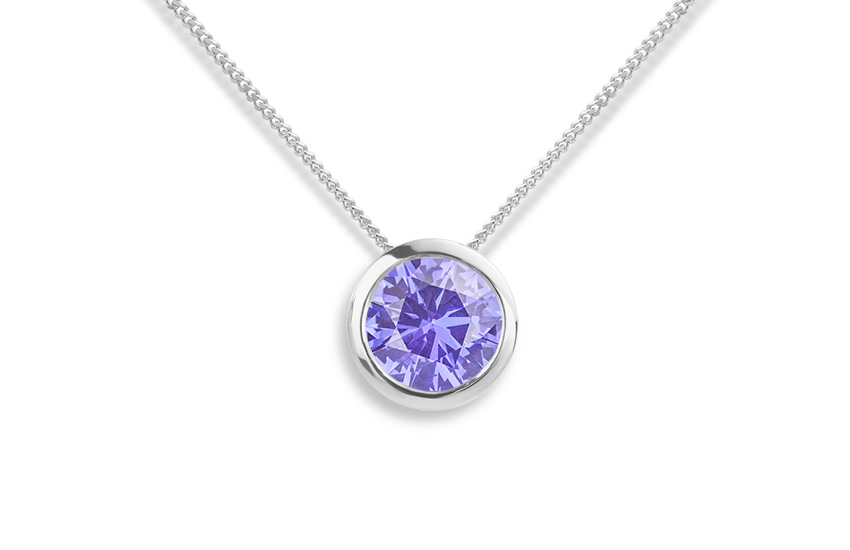
From our luxury Ryde showroom, we create many jewellery designs each year—set with varieties of December birthstones. Jewellery includes ready-made items from our window and a vast array of bespoke designs created individually for clients.
Tanzanite – No.1 Choice of Birthstone for December
Tanzanite is the most popular birthstone choice for December. This luxurious gemstone captivates buyers with its incredible tones of violet to blue.
But, what is Tanzanite? Interestingly, this incredible gemstone comes from the mineral Zoisite. Tanzanite exists in a variety of shades ranging from blue to violetish blue.
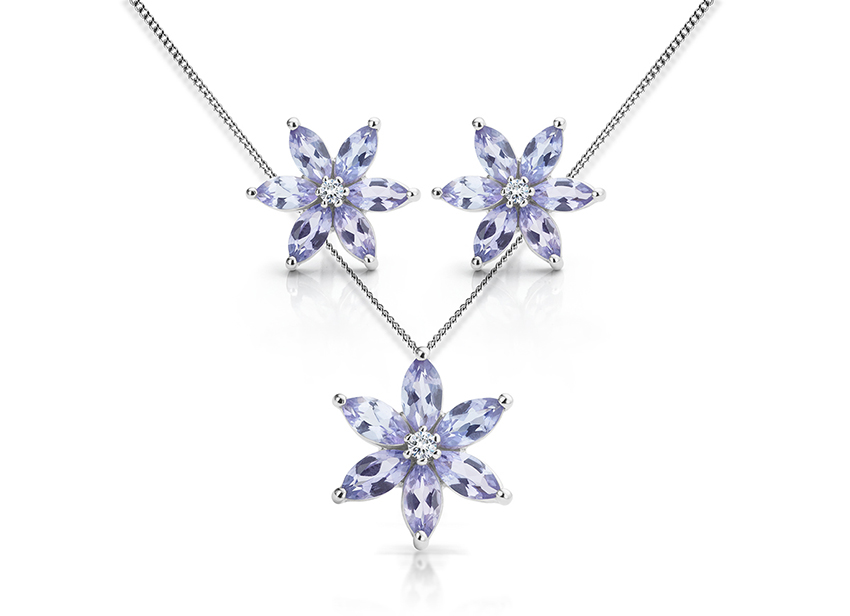
The colouration occurs due to the presence of the element Vanadium within the mineral.
As the name suggests, Tanzanite originates from Tanzania—a gemstone prized for its amazing colour and rarity. Crystalline trichroism causes the violet colouration to vary in different situations.
When mined, most Tanzanite has a reddish brown tinge, removed by heat treatment to enhance the prevailing blue-violet colour of the gemstone. For this reason, most Tanzanite is heat treated to enhance its colour.
History and Origin
Commonly known as the modern-day gemstone. Tanzanite was discovered as late as 1967 in Merelani Hills near Arusha, Tanzania, by Maasai herders. It is very close to the foothills of Mount Kilimanjaro. News spread quickly, and the government gave permission for mining to begin.
Initially, it was thought to be a sapphire mine. However, it quickly became identified due to the crystal structure as a vibrant blue variety of zoisite—a mineral stone that had been around since the early 1800s.
Thereafter, Tanzanite grew in popularity as an affordable gemstone compared to sapphire.
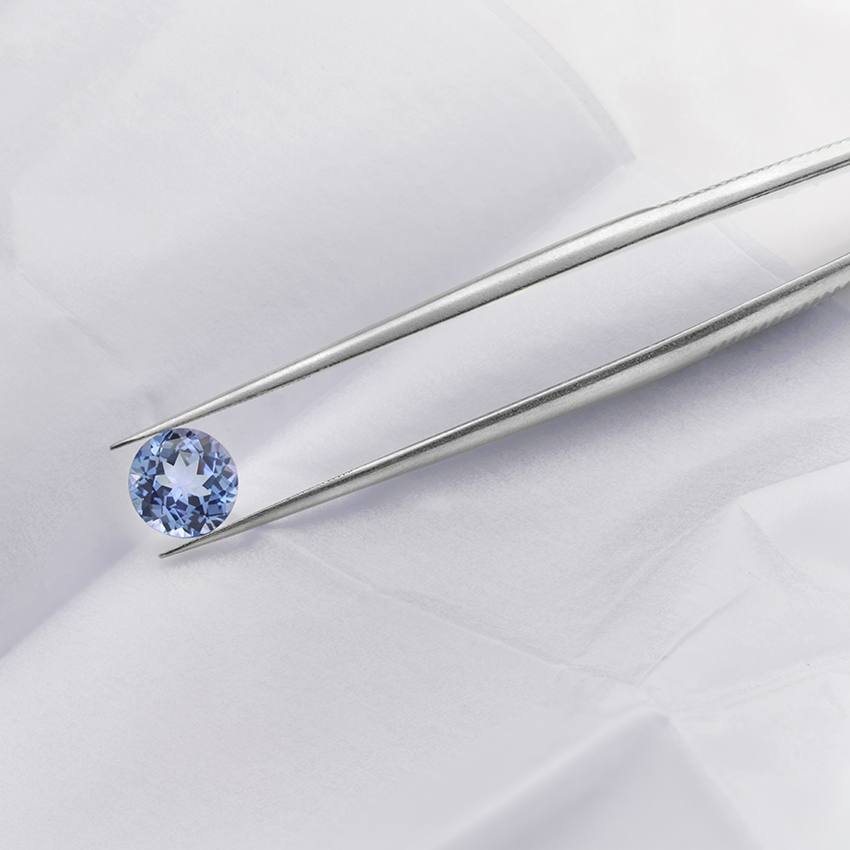
Example of a round Tanzanite showing the distinctive blue-violet colouration associated with this type of gemstone.
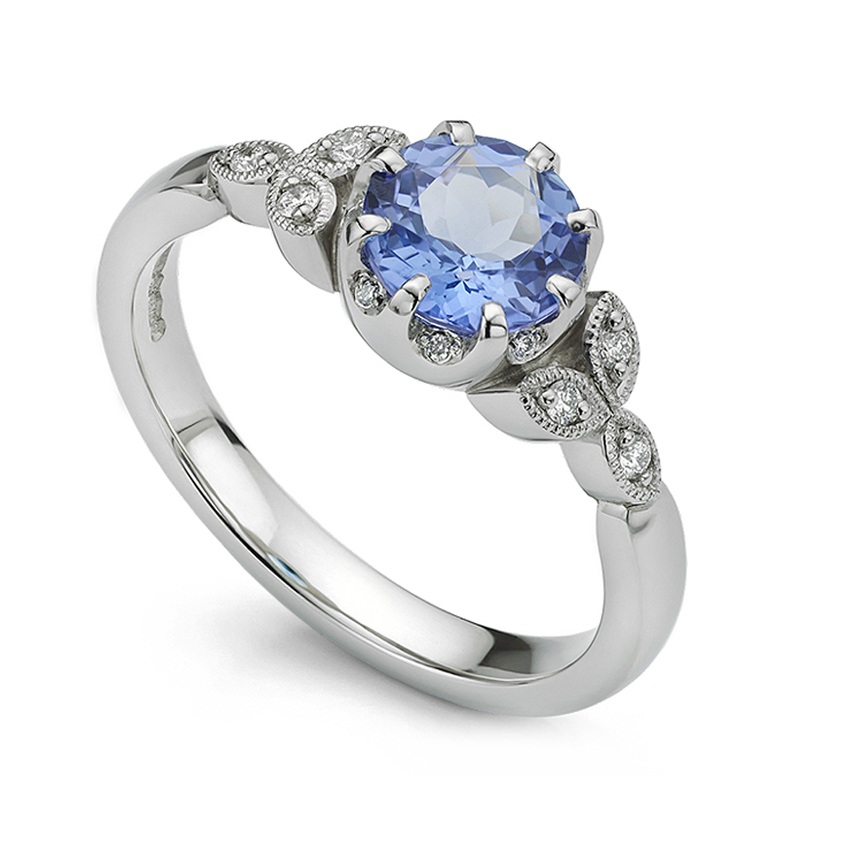
Our example ring comes from our bespoke jewellery service and was made in 950 Platinum. A one-of-a-kind Blue Tanzanite added contrast against small 1mm diamonds. The diamonds added incredible sparkle. Furthermore, the unique effect varied from other halo-style settings
Tanzanite became an addition to December’s birthstones as recently as 2002.
In fact, the name ‘Zoisite’ was avoided owing to a similarity to the word ‘suicide.’ For this reason, the name Tanzanite was used as a more appropriate name for this incredible gemstone.
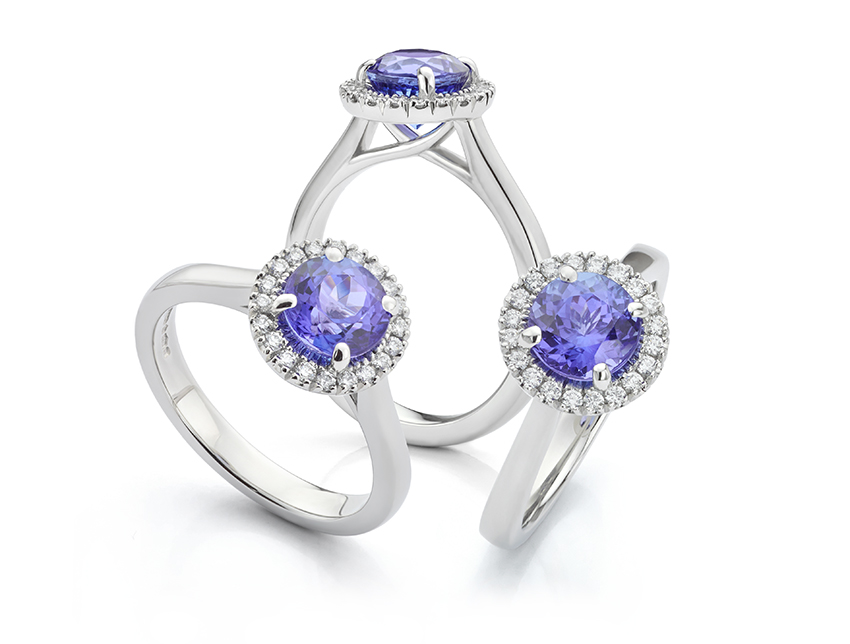
Eleanor halo ring design, set with an incredible blue Tanzanite surrounded by diamonds.
When it comes to jewellery designs, we recommend Tanzanite for both earrings and pendants. A Tanzanite engagement ring requires care during wear. This semi-fragile gemstone damages more easily than diamonds or sapphires. As a result, we never recommend this gemstone for heavy-handed clients worried about damaging their ring.
Turquoise, another popular December birthstone.

The opaque gemstone Turquoise differs from Tanzanite and Zircon. It originates from many sources worldwide including Iran, Sinai, the United States and even China. In contrast gemstones such as Tanzanite originate from just one source.
Turquoise gets its name from the 17th Century word meaning Turkish.
The colour of Turquoise varies from white to pale blue. However, most people associate Turquoise with distinctive blue-green colouration.
Historically, polished, Turquoise features in both ancient and modern jewellery. For example, from ancient Egypt, we see Pharaonic treasures set with Turquoise.
Inexpensive Turquoise jewellery often features synthetic forms of this gemstone. For example, fashion jewellery set with synthetic varieties of Turquoise makes a popular and affordable accessory. As a result, we find Turquoise across jewellery priced very differently.
Available from our Showroom collection. Sterling silver teardrop Turquoise pendant and matching earrings available.
Owing to the opacity of Turquoise, Cabochon cuts frequently appear across jewellery styles. Most gemstones feature angular facets to reflect light. Conversely, Cabochon cuts have no facets. In addition, they are typically domed with a flat base.
Measuring 6 on the Mohs scale, the hardness of Turquoise compares to glass. Turquoise frequently varies in colour, with characteristic dark flecks caused by the presence of limonite.
Zircon Gemstone
Zircon occurs in a variety of colours, including blue, yellow, orange and red. This transparent crystalline gemstone belongs to the mineral group of neosilicates.
Its name comes from the German word ‘Zirkon.’ This, in turn, comes from the Persian word ‘Zargun,’ meaning Gold-hued.
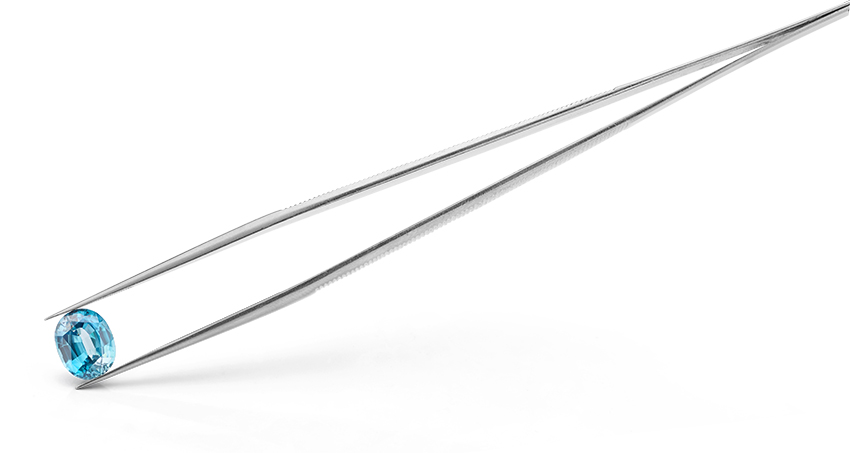
History and Origin
Zircon dates back more than 4.4 billion years and is considered the oldest mineral on earth. Commonly found in sand and sedimentary deposits, as well as metamorphic rocks and crystallized magma.
Due to its chemical makeup, Zircon has survived ages of geologic events like erosion and pressure shifts.
Zircon contains the radioactive element uranium, which changes the gemstone’s chemical structure and colour over time, giving us important clues about the planet’s formation.
During the Middle Ages, people believed that zircon gemstones could induce sound sleep, ward off evil, and bring prosperity and wisdom.
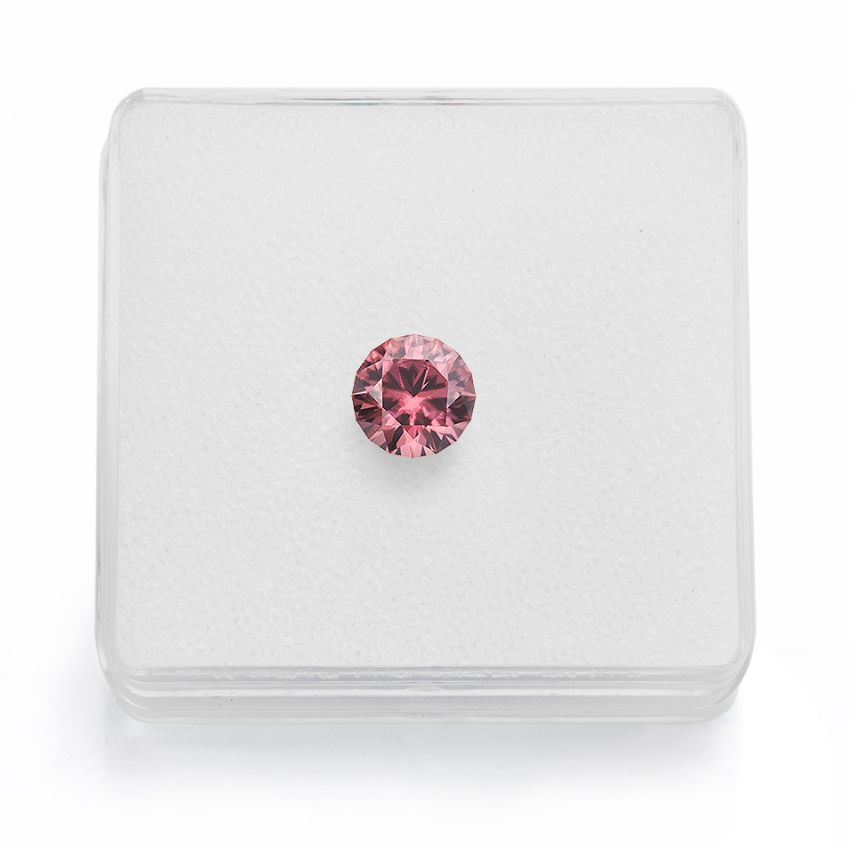
Pink Zircon – available to purchase as a loose stone or set and finished into an item of jewellery.
Blue zircon was popular during Victorian times and frequently adorned jewellery from the 1880s. Zircon’s cloudy or smoky appearance was popular in mourning jewellery designs.
In the 1920s, heat treatment became the customary practice to enhance the colour of zircon gemstones for jewellery. Zircon has also been used in the decorative ceramics industry.
While Zircon is a popular gemstone among collectors for its range of colours, consumers seem most enamoured with the blue variety. And need clarification about the history and possibility of this expansive gemstone.
December Birthstone – Blue Zircon
Large Zircon crystals occur rarely in nature. Occasionally, we work with Blue Zircon. Moreover, we source each gemstone individually for each commission. Its beauty and rarity make it an expensive gemstone choice often requested by jewellery connoisseurs. In conclusion, it makes one of the rarer choices for December’s birthstone.
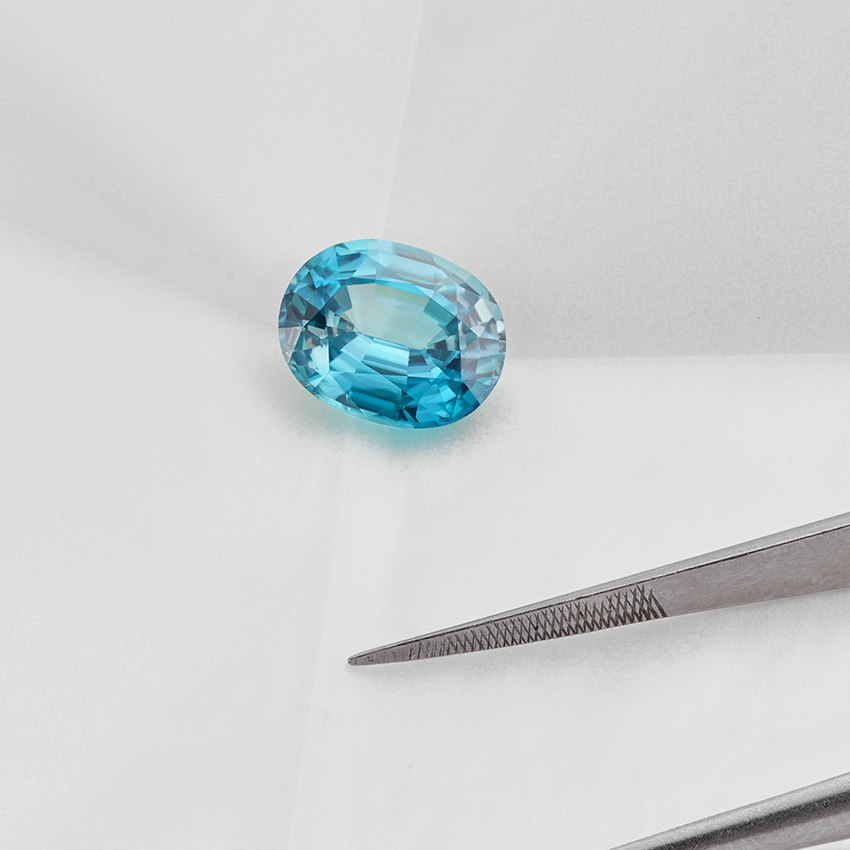
Close up of an Oval cut Blue Zircon
Blue Zircon Jewellery
One of the fabulous Blue Zircon rings created by our team featured the above gemstone set into a halo ring.
We handcrafted this bespoke ring design made from 18ct Yellow Gold. In addition, the ring featured natural white diamonds in the halo and across each shoulder of the ring.
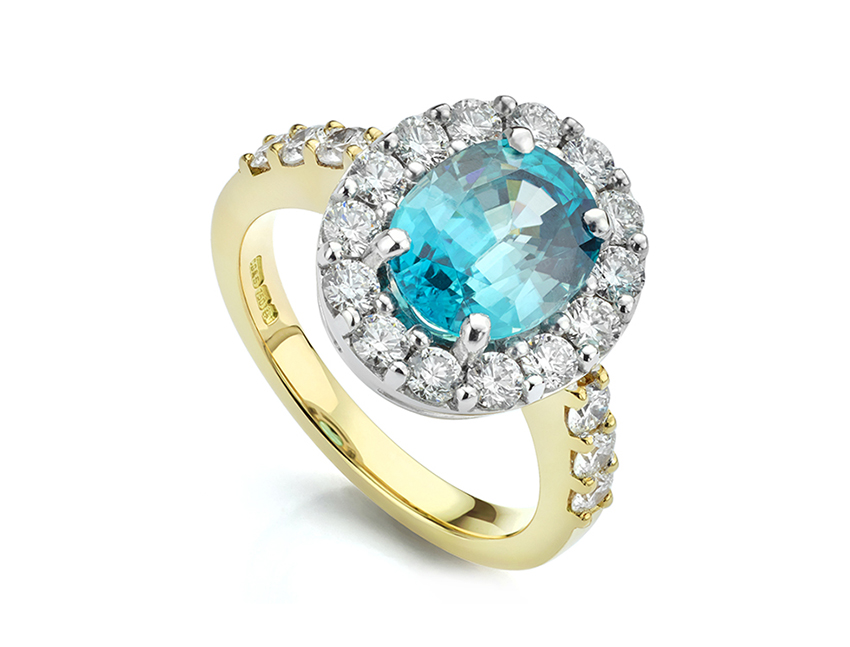
Blue Zircon and diamond halo ring handcrafted by our team at Serendipity Diamonds, made in 18ct Yellow Gold.
December Birthstone Gift Inspiration
Recently, we added a brand new set of jewellery to our showroom collection. The Tanzanite flower earrings make a perfect gift for a December birthday. In addition, a matching Tanzanite necklace makes the perfect jewellery set for December’s birthstone.
Get in touch with us for further information, or visit our Ryde showroom to discover alternative gifts available.
Further help and guidance on December’s birthstone
Contact us for further help and guidance on any item of jewellery set with December’s birthstone choice. We provide a complete bespoke design service. This includes complimentary help and guidance with no obligation to purchase. Our team are on hand in our UK showroom to offer assistance Monday to Saturday.
The post Magical December Birthstones – Tanzanite, Turquoise and Blue Zircon appeared first on Serendipity Diamonds Blog.
Gifting Your Graduates With Jewelry
Looking for a gift that honors the milestone of graduation but is also something that they will love for years? Look no further—jewelry is the perfect choice! Whether you’re a […]
The post Gifting Your Graduates With Jewelry appeared first on PriceScope.
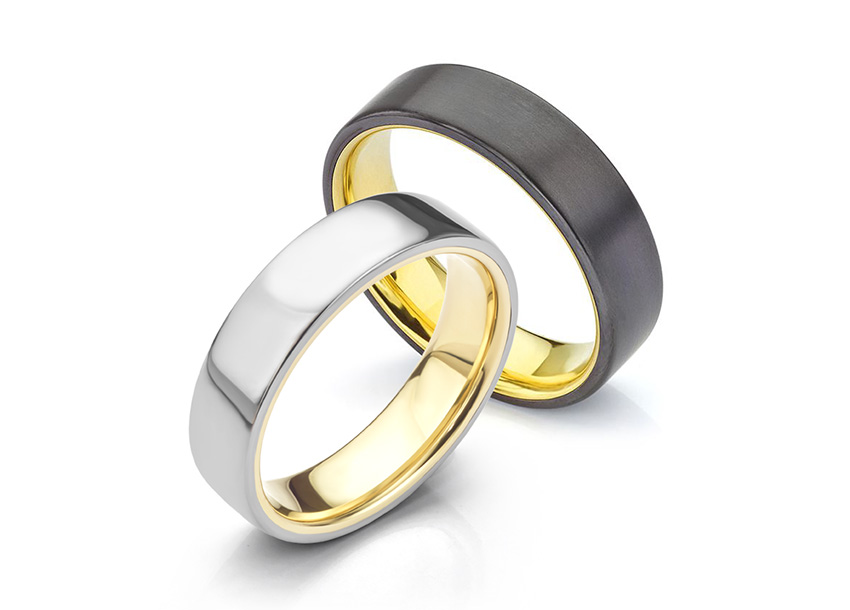

Plain Zirconium differs from black Zirconium, which has a black oxide layer on the outer surface and is more prone to damage. At the same time, a brushed satin finish will show visible marks that appear from knocks and scrapes.
Both metals vary in appearance. Plain polished Zirconium resembles Titanium in colour, whereas Black Zirconium provides a dark, black-coloured metal with a shiny or matte appearance.
Furthermore, Zirconium provides a traditional colour for wedding rings, while Black Zirconium introduces the black wedding ring option, which is growing in popularity.
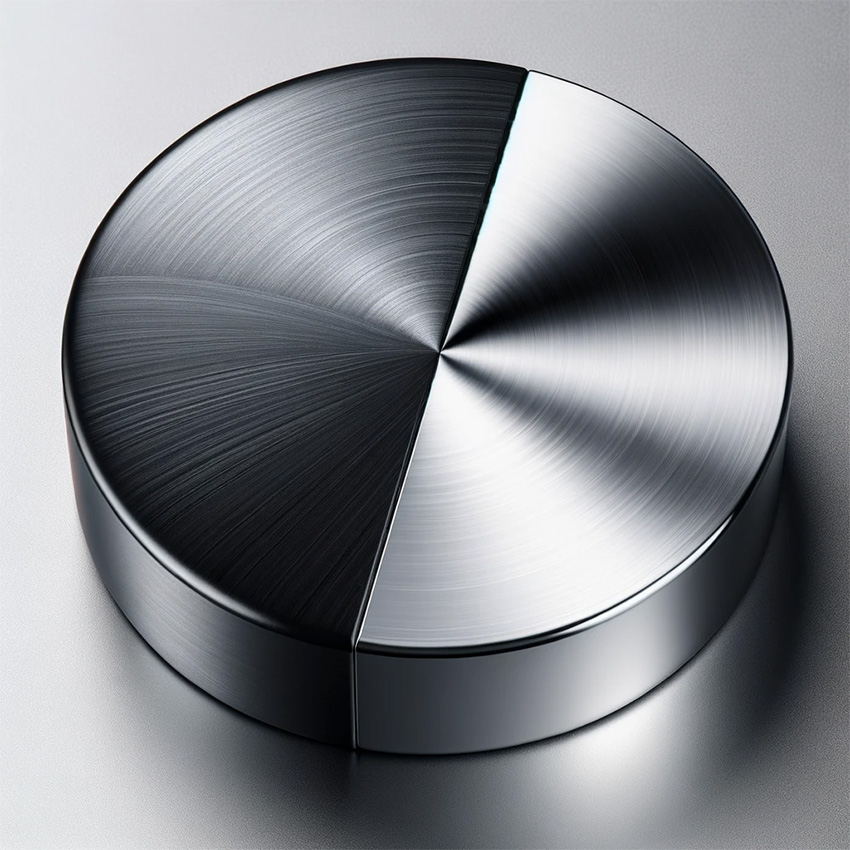
Which is best for daily wear and tear
When we consider plain polished Zirconium vs Black Zirconium for wear, the latter will scratch over time. Most Titanium and Zirconium wedding rings wear to a natural patina in the same way as most metals. To keep a Black Zirconium wedding ring black, rings require occasional re-finishing to maintain the even black surface.
Engraving on plain and black Zirconium wedding rings
| Feature | Black Zirconium | Regular Zirconium |
|---|---|---|
| Durability | Highly durable, scratch-resistant | Durable, but can scratch over time |
| Appearance | Dark, sleek, matte finish | Shiny, silver-grey appearance |
| Cost | Moderate to high cost | Moderate cost |
| Maintenance | Low maintenance, resists tarnish | Requires regular cleaning to maintain shine |
| Common Applications | Popular in modern and unique designs | Classic and traditional designs |
Laser engraving on Black Zirconium results in a lighter engraved effect. By comparison, a regular Zirconium surface produces a darker ‘regular’ engraved effect on a ring.
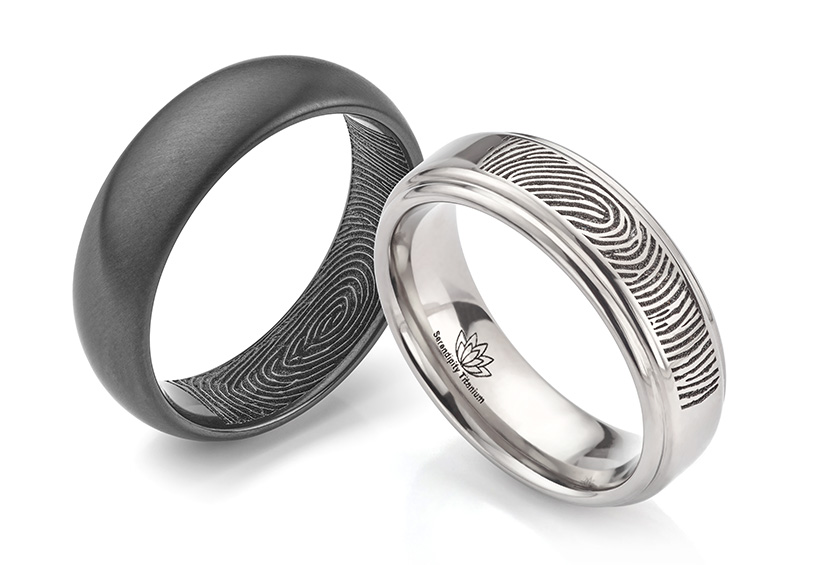
Colourful choices for wedding rings
Unlike black Zirconium, regular Zirconium allows colour to be added through a process of anodising the surface of the metal. As a result, many vibrant combinations are possible with colour added to detail.
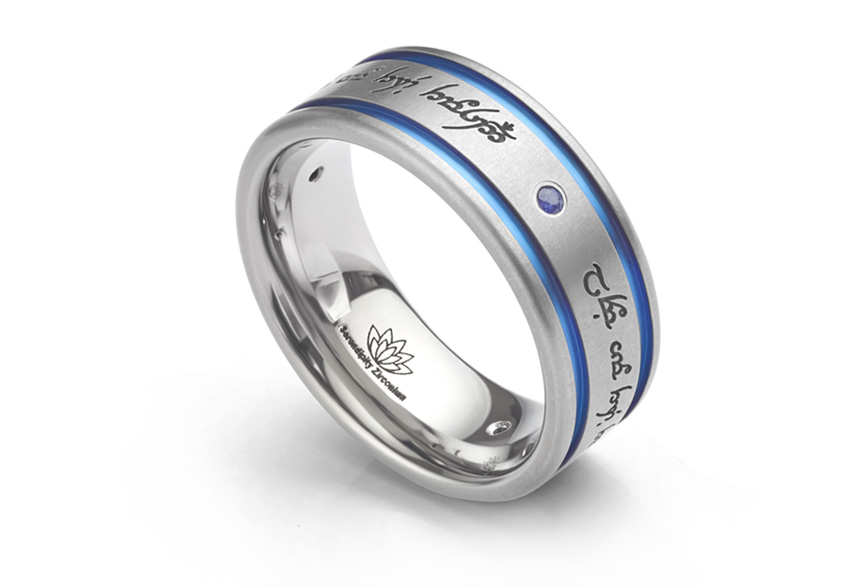
Since the coloured effect is only microns thick, this effect does not suit the surface. Instead, we add this into patterns machined into rings. Colours include pinks, purples, blues, greens and yellows.
The post Zirconium vs Black Zirconium Rings – What’s the Difference? appeared first on Serendipity Diamonds Blog.